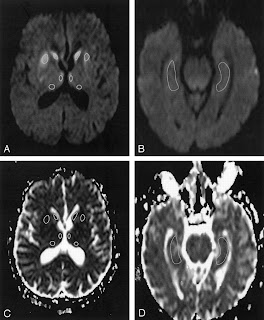CJD: Creutzfeldt-Jakob disease

The BBC is reporting A mysterious case of Creutzfeldt-Jakob disease (CJD) has raised fears more people than thought could be at risk.
Before we look at the entire story let's answer the question of, What is Creutzfeldt-Jacob disease?
National Institute of Neurological Disorders and Stroke
Creutzfeldt-Jakob disease (CJD) is a rare, degenerative, invariably fatal brain disorder. Typically, onset of symptoms occurs at about age 60. There are three major categories of CJD: sporadic CJD, hereditary CJD, and acquired CJD. There is currently no single diagnostic test for CJD. The first concern is to rule out treatable forms of dementia such as encephalitis or chronic meningitis. The only way to confirm a diagnosis of CJD is by brain biopsy or autopsy. In a brain biopsy, a neurosurgeon removes a small piece of tissue from the patient's brain so that it can be examined by a neurologist. Because a correct diagnosis of CJD does not help the patient, a brain biopsy is discouraged unless it is need to rule out a treatable disorder. While CJD can be transmitted to other people, the risk of this happening is extremely small.
Is there any treatment?
There is no treatment that can cure or control CJD. Current treatment is aimed at alleviating symptoms and making the patient as comfortable as possible. Opiate drugs can help relieve pain, and the drugs clonazepam and sodium valproate may help relieve involuntary muscle jerks.
What is the prognosis?
About 90 percent of patients die within 1 year. In the early stages of disease, patients may have failing memory, behavioral changes, lack of coordination and visual disturbances. As the illness progresses, mental deterioration becomes pronounced and involuntary movements, blindness, weakness of extremities, and coma may occur.
What research is being done?
The leading scientific theory at this time maintains that CJD is caused by a type of protein called a prion. The harmless and the infectious forms of the prion protein are nearly identical, but the infectious form takes a different folded shape than the normal protein. Researchers are examining whether the transmissible agent is, in fact, a prion and trying to discover factors that influence prion infectivity and how the disorder damages the brain. Using rodent models of the disease and brain tissue from autopsies, they are also trying to identify factors that influence the susceptibility to the disease and that govern when in life the disease appears.
For more information about the disease check out the following links:
Creutzfeldt-Jakob disease - MayoClinic.com
MedlinePlus: Creutzfeldt-Jakob Disease
WHO Variant Creutzfeldt-Jakob disease
Now that you know what the disease is let'e look at the news story from the BBC:
CJD death 'is no cause for panic'
A mysterious case of Creutzfeldt-Jakob disease (CJD) has raised fears more people than thought could be at risk.
New Scientist magazine reports the genetic make-up of a 40-year-old woman who may have died from variant CJD was different from all previous patients.
But the University College London study's lead researcher said it was too early to say for sure.
And a government advisor on CJD said many cases needed to emerge to confirm a new wave and people should not panic.
There's certainly no need to panic Professor Chris Higgins Chair, SEAC
CJD is a fatal brain condition, with dozens of cases every year.
However, the BSE crisis in cattle in the 1980s and 1990s coincided with the emergence of a new form of the disease, variant CJD.
It is thought that this new form - which has so far been confirmed in only a relatively small number of humans - may have been linked to eating meat infected with BSE, although the human illness often did not emerge until years later.
After a slaughtering programme removed infected cattle from the food chain, deaths from variant CJD were thought to have peaked in the first half of this decade, falling steadily since 2003.
However, the latest find opens a small possibility that the "incubation period" for some people may be longer, and that there could be a second upsurge in deaths to come.
Gene link
Every person who has died from variant CJD before this point has one thing in common - they carry a gene variant called MM.
About four in 10 people have this variant, and some experts believed it was possible that in humans, only these people may ever have been vulnerable to variant CJD.
The latest death is the first recorded involving a different variant - VV - found in approximately one in 10 Britons.
Lead researcher Dr Simon Mead, from the Prion Unit at University College London, whose work was originally published in the journal Archives of Neurology, said that at the moment it was too early to say whether this signalled the beginning of a rise in cases among other VV carriers exposed to BSE-infected meat.
He said: "We can't say for sure whether this is actually variant CJD, or simply a case of "sporadic" CJD in a younger-than-expected patient - it does not have all the features of either.
"It could be a new type of variant CJD affecting VV people, but we would need to see a lot more cases than at present to confirm this.
"What we are doing at the moment is asking people to stay alert and look out for other cases."
Evidence lacking
Professor Chris Higgins, the Chair of the government's Spongiform Encephalopathy Advisory Committee (SEAC), which advises on variant CJD, played down fears that cases could rise again.
He said: "There's certainly no need to panic. This could simply be a case of sporadic CJD, in which case the genetic makeup is irrelevant, as this is found in MM and VV people.
"At the moment there isn't enough evidence to conclude one way or the other.
"We know that it is possible to infect VV mice with variant CJD, but it is actually much harder than infecting MM mice, so even if there were to be a rise, it would not a big rise."
To date there have been 114 deaths from variant CJD in the UK, with another 47 deaths thought likely to be due to the disease.




1 Comments:
Trevor:
I came across your blog(s) today and actually met one of your parishioners last week on base. I believe we also have a mutual friend in Baker Hughes. Hope we can have a cup of coffee together some time.
Chaplain James Galyon
Post a Comment
<< Home